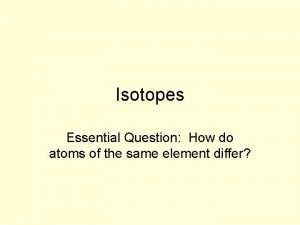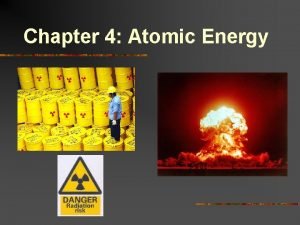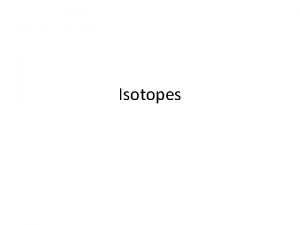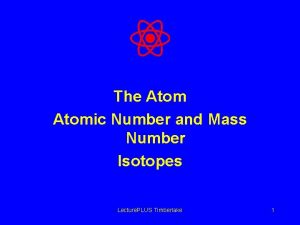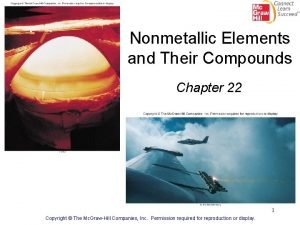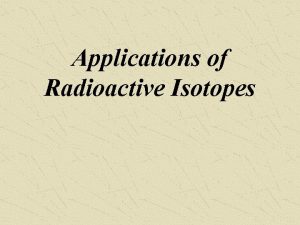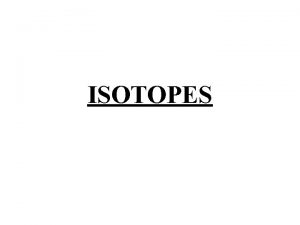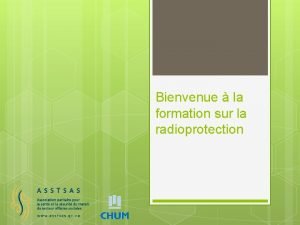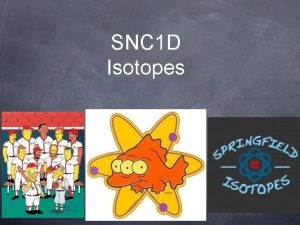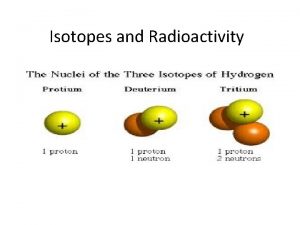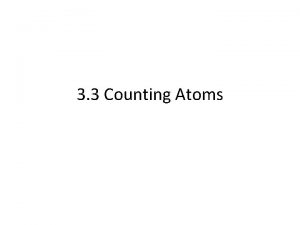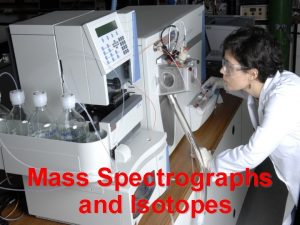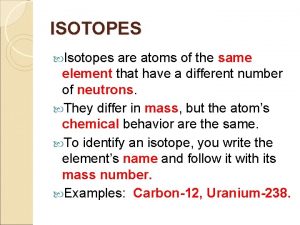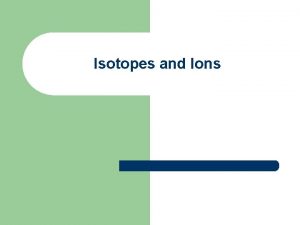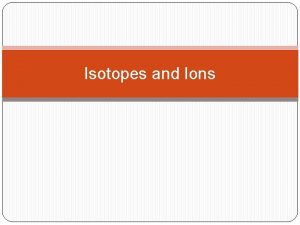Isotopes Essential Question How do atoms of the














- Slides: 14

Isotopes Essential Question: How do atoms of the same element differ?

What is an Isotope? • Isotopes are atoms of the same element that have the same number of protons but a different number of neutrons. • All elements consist of naturally occurring isotopes and artificially produced isotopes

How are isotopes of an element similar? How are they different? The isotopes of an element have: • Identical Chemical Properties (this is because they have the same numbers of protons and electrons and subatomic particles are responsible for chemical behavior) • Different Physical Properties (different mass and different number of neutrons)

How do we represent specific isotopes? • Nuclear symbols are used to represent specific isotopes • To write a nuclear symbol: • • • 1. ) the symbol of the element is written first 2. ) the mass number is written as a superscript to the left of the symbol 3. ) the atomic number is written as a subscript to the left. Study the illustration below Li-7 isotope

Learning Check • Given a nuclear symbol, what does the top left number represent? – What does the bottom left number represent?

Can we write isotopes in a different way? • You can also use the mass number and the name of the element to designate the atom or isotope – This is called hyphen notation • For example, two isotopes of carbon are carbon-12 and carbon-13 – The nuclear symbols for these two isotopes would be: 12 6 C 13 6 C

Learning Check • What does the number after the hyphen represent?

What do the numbers used when writing isotopes represent? • The mass number • total number of protons and neutrons in a specific nucleus of an atom. • The atomic number • always refers to the total number of protons in an atom.

How do I figure out the number of neutrons when writing isotopes? • To determine the number of neutrons in a specific isotope – subtract the atomic number from the mass number • See the formula below Mass Number (neutrons + protons) Atomic Number (number of protons) (number of neutrons)

Learning Check • Boron consists of two isotopes, B-10 and B-11 1. ) Determine the number of neutrons in each of the isotopes a. ) b. ) B-10: B-11: 10 – 5 = 5 neutrons 11 – 5 = 6 neutrons 2. ) Using the periodic table, write the nuclear symbol for each isotope given in hyphen notation

What does the atomic weight of an element depend on? • To identify isotopes the mass number is placed after the element’s name – Ex: chlorine-35 potassium-37 • The atomic weight of an element depends on the abundance of its isotopes. – If you know the mass of the isotopes and the percent (fractional) abundance of the isotopes, you can calculate the element's atomic weight.

How do I calculate the atomic mass of an element based on percent natural abundance and isotopic masses? • Example: Chlorine has 2 naturally occurring isotopes Mass # Mass Percent Abundance 35 34. 968852 75. 77 37 36. 965303 24. 23 • To calculate the average atomic weight: – add the mass of each isotope multiplied by its percent abundance • This is the solution for chlorine: (34. 968852) * (0. 7577) + (36. 965303) * (0. 2423) = 35. 45 amu

Learning Check Nuclear Symbol Complete based on the following information: 29 protons, mass 65 Barium - 138 17 protons, mass 36 Tin - 120 16 protons, mass 30

 Atoms and their isotopes pogil
Atoms and their isotopes pogil Periodic table regents
Periodic table regents Examples of costa's level 1 questions
Examples of costa's level 1 questions Characteristics of lipids
Characteristics of lipids Atomic isotopes
Atomic isotopes The isotope atoms differ in *
The isotope atoms differ in * Isotopes
Isotopes Argon hyphen notation
Argon hyphen notation Isotopes examples
Isotopes examples Fertile isotopes
Fertile isotopes Hydrogen isotopes
Hydrogen isotopes Uses of radioactive isotopes
Uses of radioactive isotopes Isotopes examples
Isotopes examples Isotopes radioactifs
Isotopes radioactifs Atomic mass cl
Atomic mass cl





